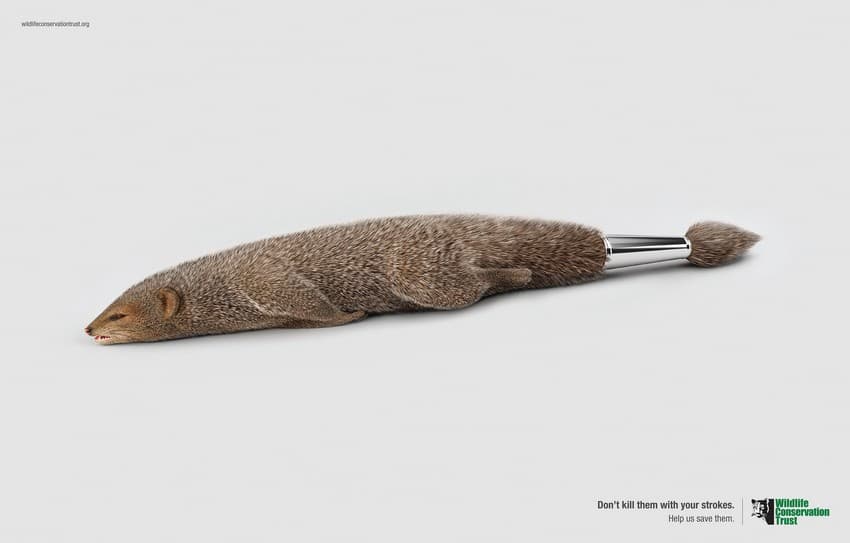Could art be cruel? Could it kill? The purpose of art, among others, is also the portrayal and appreciation of beauty. How can it then be self-defeating and exterminate the very forms of life that are its muse? Some of the earliest-known works of art depict animals long gone – cave lions, woolly rhinos, mammoths. Immortalised in ochre and charcoal, the profiles of such ancient creatures adorn the shadowed walls of prehistoric caves around the world. Closer home in Madhya Pradesh, the rock shelters of Bhimbetka celebrate gaur, tiger and rhinoceros. Art has always imitated and venerated life in all its glorious forms.

Not far from Bhimbetka, and close to any scrubland or agricultural field in India, a scene plays out frequently. A mongoose’s body twitches one last time after a final blow. Long exhausted after failed attempts to escape the net, it is bludgeoned to death. In the hinterlands of India, the international demand for animal hair paintbrushes drives these killings. Marginalised tribes engaged in sustenance hunting are exploited to kill mongooses in large numbers. With around 50 mongooses killed for every kilogramme of hair that reaches brush manufacturers, the species is being pushed to the brink. People from thousands of villages are engaged in this massacre, making India a major illegal exporter of mongoose hair.
Listed in Part II of Schedule II of the Wild Life (Protection) Act, 1972, all the six species of mongoose found in India are accorded maximum protection by law, making trade in their hair or any other body part illegal.
The Wildlife Conservation Trust (WCT) urges art schools, artists, students and everyone who has ever bought or will buy a paintbrush to spare a thought for India’s wildlife and opt for synthetic fibre brushes. With the beauty and grace of squirrels, mongooses and weasels wiped off the face of the earth, art will struggle to find its next muse. The image splashed across these pages is part of a public awareness campaign by WCT aimed at bringing to the eyes of the masses, in a stark yet subtle manner, the story of wild animals that are massacred to satisfy our whims.
First published in: Sanctuary Asia, Vol. XXXVIII No. 6, June 2018.
——————————————————————————————————————————————————————
About the Author: Rizwan Mithawala is a Conservation Writer with the Wildlife Conservation Trust and a Fellow of the International League of Conservation Writers.
——————————————————————————————————————————————————————
Disclaimer: The author is associated with Wildlife Conservation Trust. The views and opinions expressed in the article are his own and do not necessarily reflect the views and opinions of Wildlife Conservation Trust.
Related Links
- Small Grants
- Connectivity Conservation
- 9 Steps to an Environment Friendly Lifestyle
- GUARD DIARIES: Battling Forest Fires
- More Power to the Lesser Known
